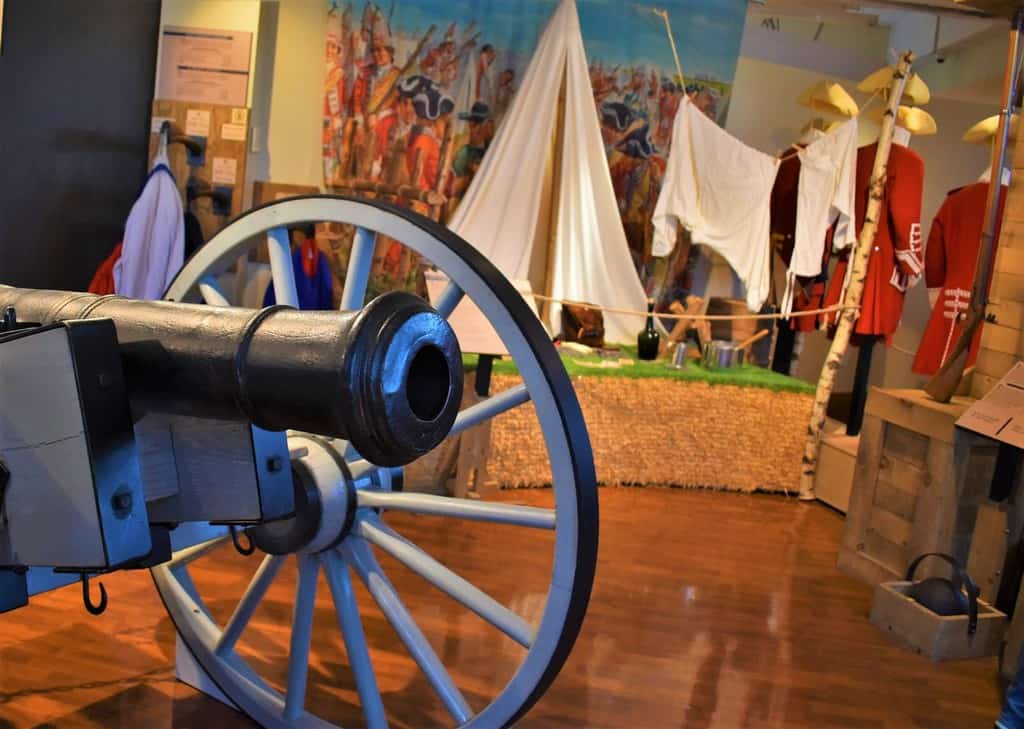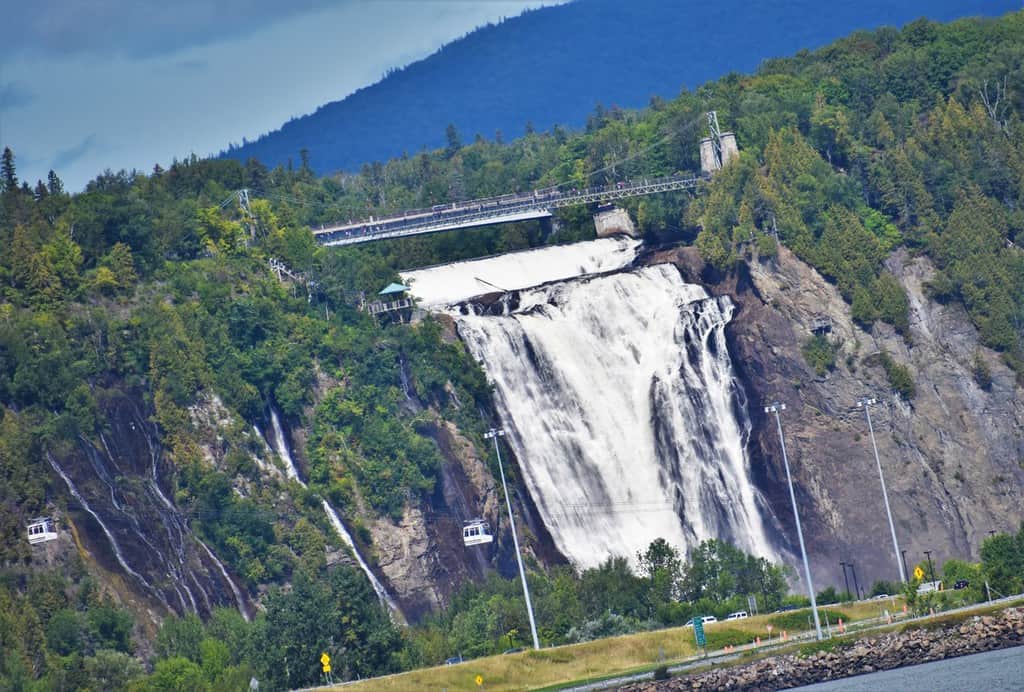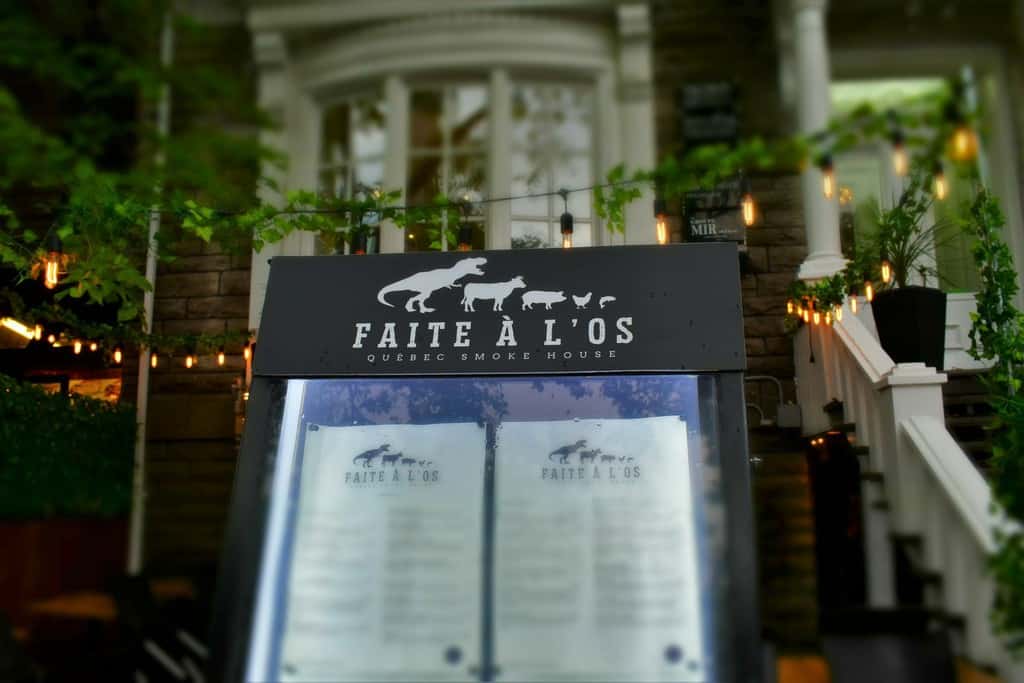The history of Quebec City is longer than many destinations in North America. When we planned our visit to Canada’s first city, we knew that we would be immersing ourselves in all of this past. One of the most memorable, and decisive events, was the famous battle for control of Quebec. Nearly two decades before the United States became a country, Quebec was experiencing a changing of the guard. We dropped by the Plains of Abraham (named for a farmer who owned the land) to see the battlefield site firsthand. After strolling through the park that was once a battlefield, we made our way to the museum.
We want to thank Quebec City Tourism and Plains of Abraham Museum for hosting our visit. Rest assured all opinions are our own.
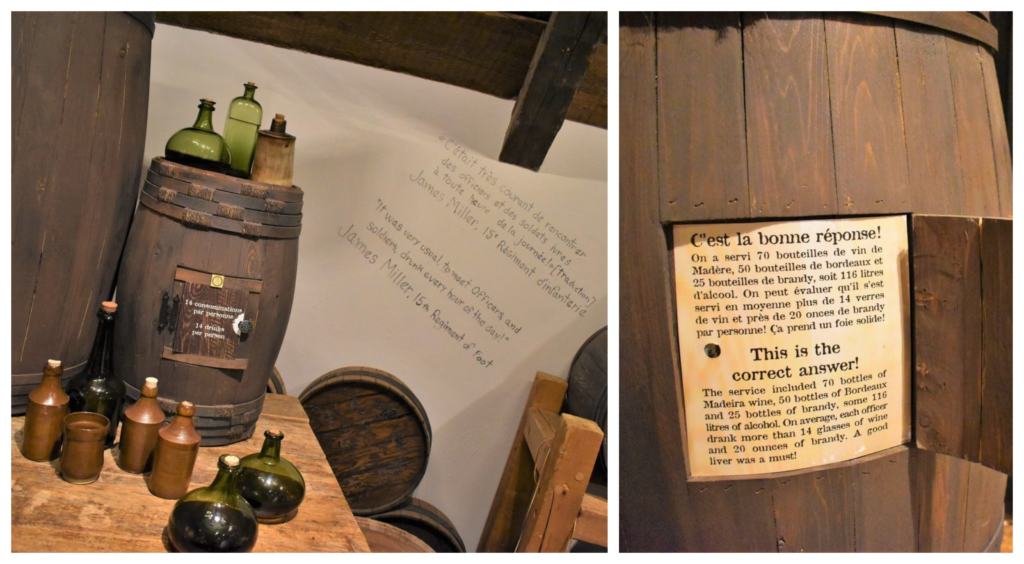
Belly Up, Boys!
The Plains of Abraham Museum is designed to help visitors get a better grasp of life during this tumultuous time in Quebec. After meeting the staff, we made our way to the exhibits. We began by learning about life in the camp. It’s important to remember that the time frame of the exhibits is based on the mid-1700s. Life was much different, and for those in military service, boredom was a constant companion. We discovered that drinking was a popular pastime, and it surprised us the volume of consumption by the average soldier and officer. We are sure this type of habit would be met with a different outlook these days.
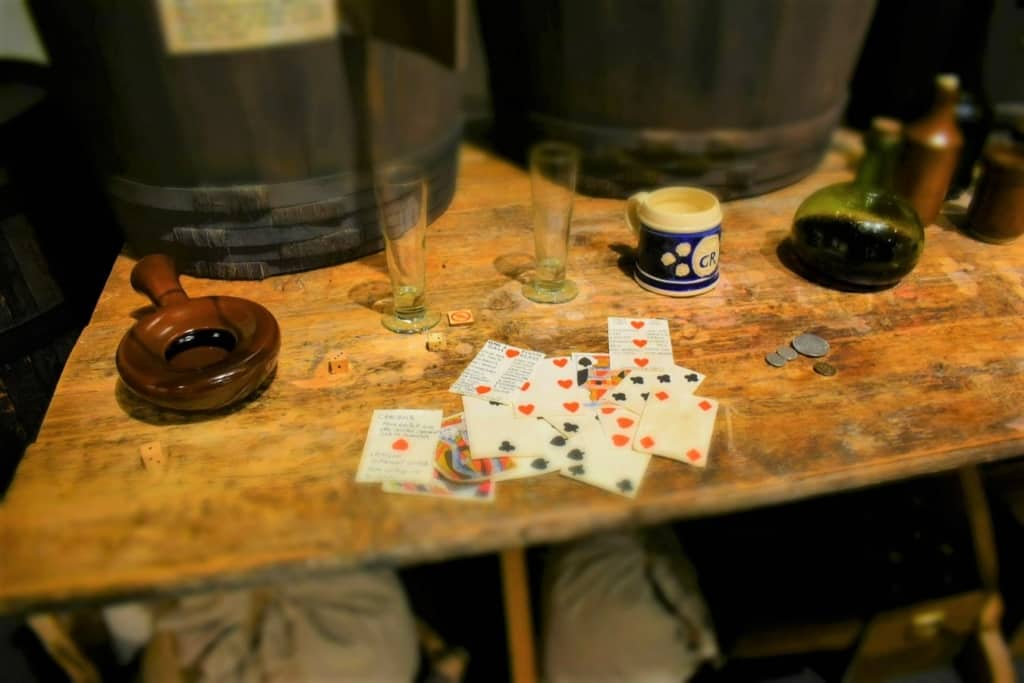
Idle Time
Of course, drinking is often associated with other activities, and gambling was another common vice. If you combine these two activities, you can almost surely guarantee there would be some misconduct. A losing streak may be misconstrued as cheating by an opponent, which would lead to a disagreement and even fights. To keep order in camp, the punishment had to be doled out in an appropriate fashion.
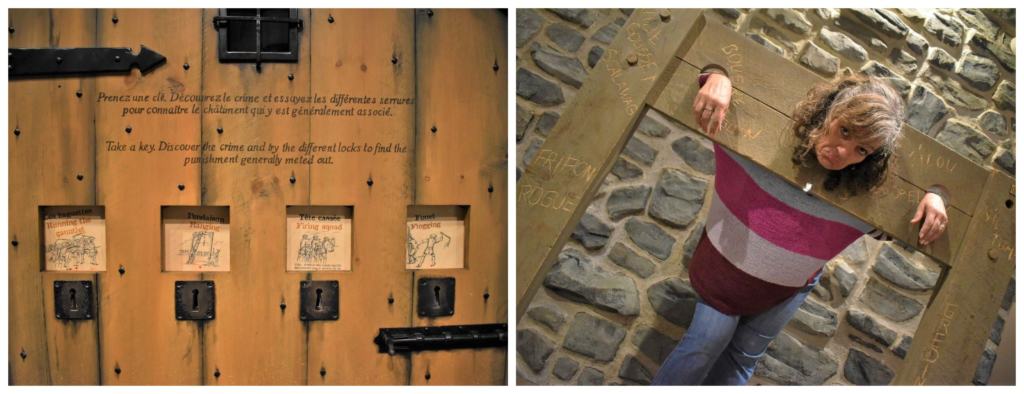
Bad Behavior
The displays in the camp portion of the museum are designed to be interactive. Sliding doors reveal the answers to questions about camp life. While French is the base language in this region of Canada, English is also displayed. This made it easy for us to stay engaged with the educational exhibits. We were surprised to find out that corporal punishment was very common for enlisted soldiers to receive, in response to inappropriate behavior. Crystal even displayed one of the more common methods of correction that was used for lesser crimes.

The Coming Storm
Clearly, the mid-1700s was a tumultuous time in North America. The colonies, to the south, were beginning to experience issues with the British crown. In the Quebec region, France was feeling pressure from the same. The Seven Years’ War, which had begun in 1756, had become a global war. Although the forces included all five of the major European countries, the two leading the conflict were France and England. By the time the conflict landed in the New World, it was clear that England had its eyes set on control of North America. Quebec would become one of the last bastions of hope for France’s grasp on the Canadian portion.
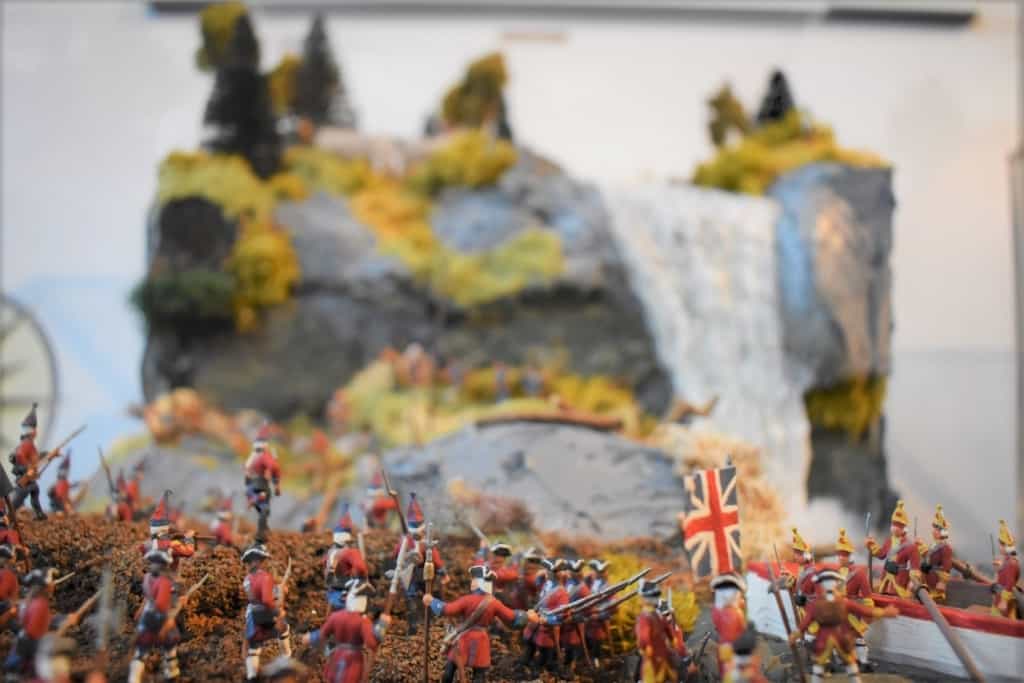
Repelling the British
The British set up camps on the opposite side of the St. Lawrence River and began a bombardment campaign. This was successful in destroying nearly all of Lower Town, but the French remained dug in on top of the cliffs. It was clear that a manned attack would be needed, so the English set their sights on gaining the high ground near Montmorency Falls. Through a series of blunders and unplanned obstacles, this plan of attack failed, and the British were forced to withdraw and come up with a new plan. They would spend the rest of the summer destroying the outlying structures in the region, in an effort to cut off any support to the French.
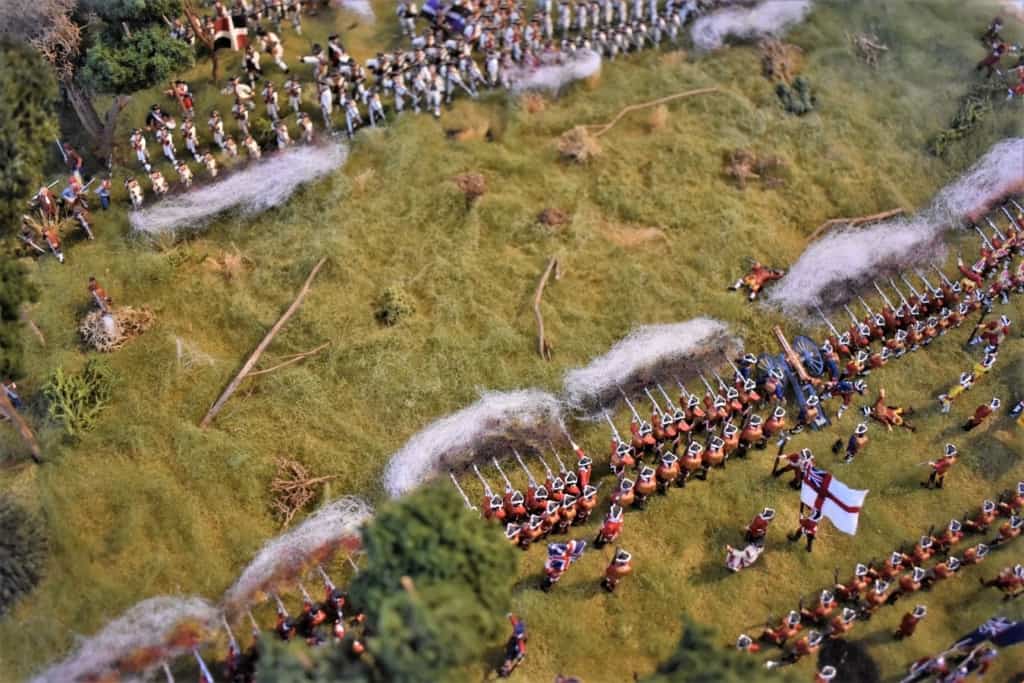
Decisive Battle
Camp life was bereft with issues for the British forces, as an illness was spreading through the ranks. The officers could see the dire need to end the siege. By this point, we knew what was about to transpire. Our visit to Musee du Fort had shown us the entire sequence of battles that had led up to this point. While that audio-visual experience had played out the troops positioning, it was really just an overview of this monumental struggle for control. The Plains of Abraham Museum had dioramas set up, which gave us a 3D look at the conflict. We decided that what would be really cool would be for Immersion Quebec to offer a version of this portion of the war using Virtual Reality.
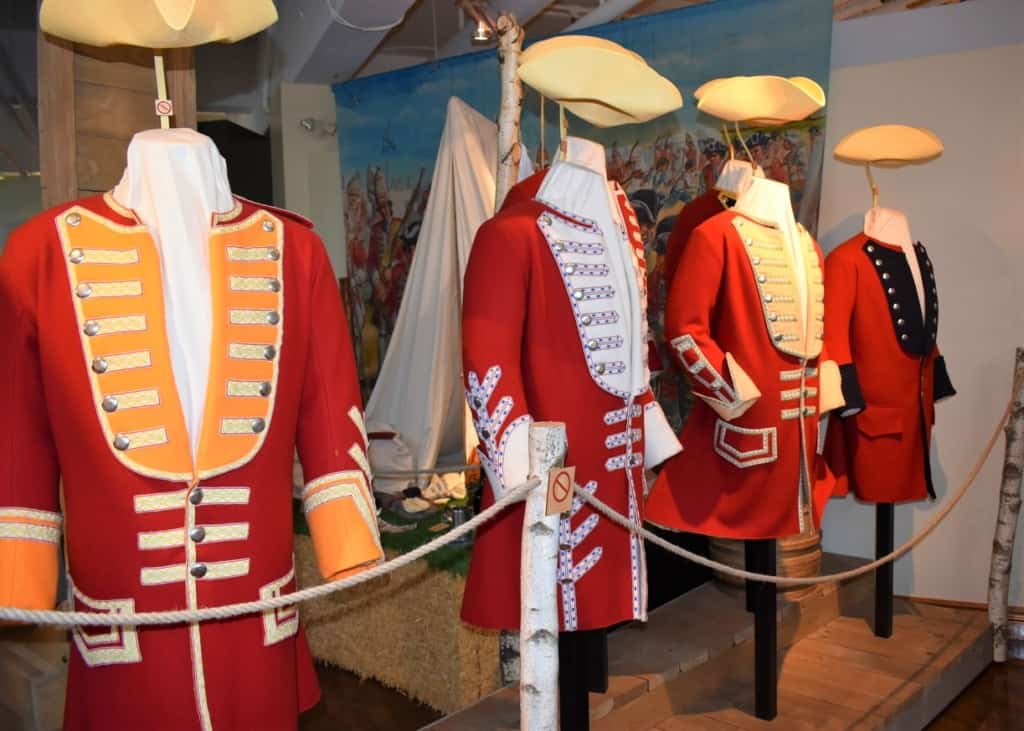
Changing of the Guard
We were really impressed with the use of immersive screen presentations at each of the places we visited. This really helps draw the visitor in and give a better understanding of the chain of events. Now that we had recapped the sequence of events that created the changing of the guard in the Quebec region, it was time to explore the rest of the museum. A collection of British uniforms provided a stark reminder of the change in control. Additional artifacts are displayed around the exhibit, which provides more details about the new leadership.
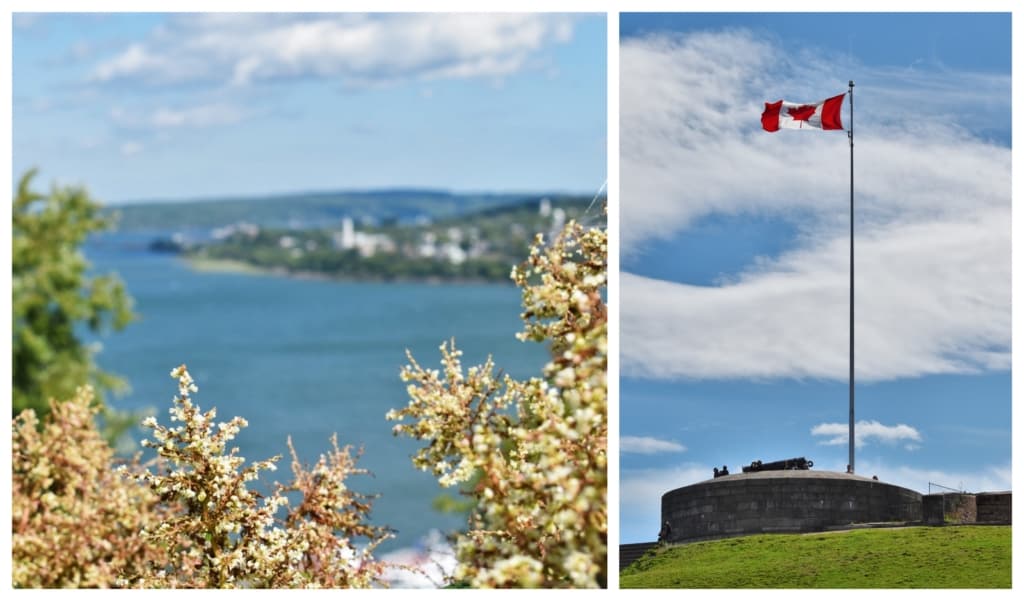
The Citadelle
After the war, the British saw the need for a substantial defensive position to be created on the edge of the Plains of Abraham. A large fort was considered too expensive of an undertaking, so a smaller wooden structure was constructed. After the colonies gained their independence, Britain saw the need to reinforce their defensive position along the St. Lawrence River. The walls of the city were improved before the War of 1812, which would affect both Canada and the United States. After this struggle with France for control of North America, monies were finally allotted for the building of the Citadelle.
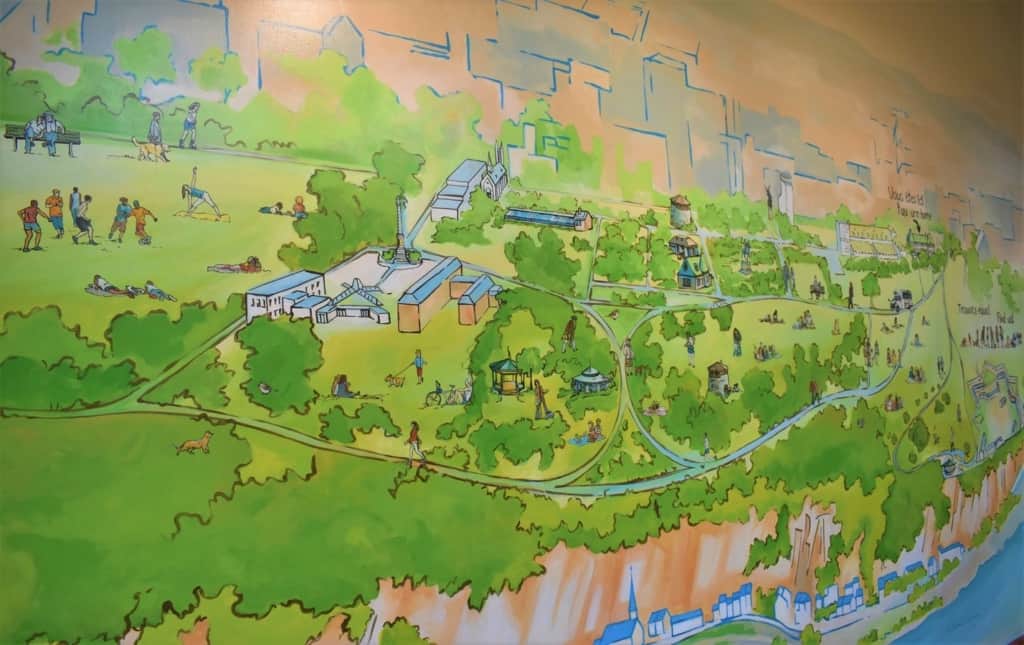
Canada’s First National Historic Park
The Plains of Abraham received national park status in 1908, which marked the 300th anniversary of the founding of Quebec City. These days, this green oasis provides a backdrop for many local events. The park is filled with walking trails and leisurely relaxation opportunities. With its strategic placement on a cliff, it offers amazing views of the river and surrounding landscapes. We even learned that wintertime brings throngs of cross-country skiers to the park to enjoy the wide-open spaces. It looks like the changing of the guard in Quebec City has led to some great amenities. Isn’t it time for you to visit Canada’s first city?


